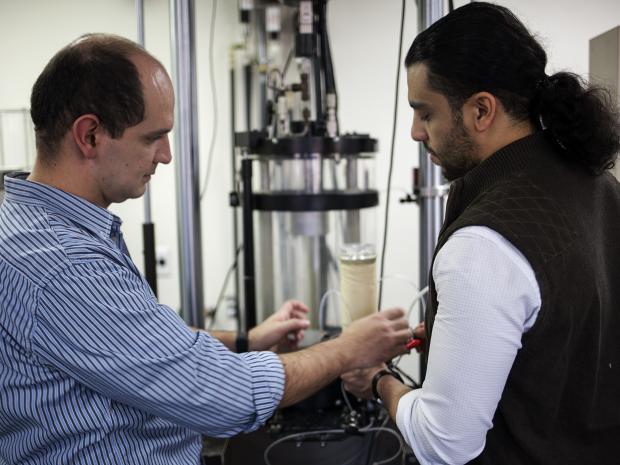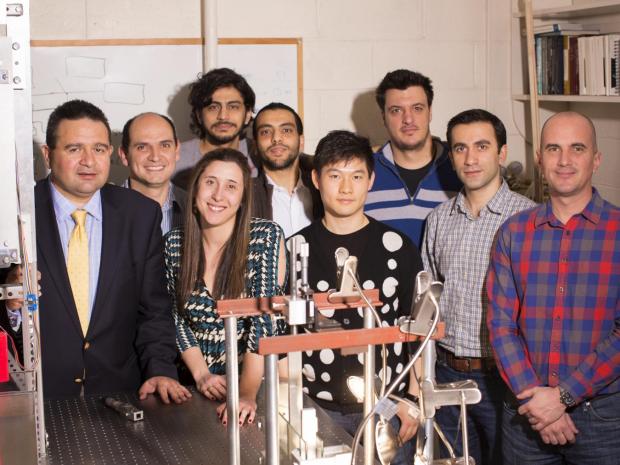Geotechnical Research

NYU geotechnical group is widely recognized as the leading authority in several areas of geotechnical research including physical modeling of soil structure interaction and multiphase flow using transparent soils, behavior piling made of recycled polymers, micro piling, and ground improvement using soil nails. In addition, recent research included seismic earth pressure, remediation of contaminated soils, sensing, earth pressure against rigidly framed structures, and penetration mechanics of fast traveling projectiles and torpedo anchors.
Research Labs, Projects and Faculty
Drilled Shaft Defects
This project presents the results of nondestructive integrity tests and axial static load tests on drilled shafts constructed in varved clay.
Geotechnical Impact Engineering Laboratories
Our focus is on the application of engineering mechanics to understand the origin of penetration resistance of natural condensed matter. Our program interests are currently focused on the burial of unexploded ordnance in water-over-soil environments, but past work has included terrestrial earth penetrators, anchor embedment, and tunneling.
MAGICgeo
MagicGeo software features a user-friendly graphic user interface to perform standard and advanced digital image correlation (DIC), meso scale kinematic analysis and 2D particle kinematics analysis.
Plastic Piles Wiki
This site summarizes work done at NYU Tandon to advance the state of the art in polymeric piling practice. Polymeric piling is a sustainable piling alternative for waterfront applications.
Rapid Penetration into Soils
NYU geotechnical group has been studying terminal ballistics in soils, with emphasis on sand. This project provides information on the response of sand under high strain rate loading, the mechanics of penetration in soils, and a summary of visualization experiments.
Rigidly Framed Earth Retaining Structures
A simple method that can be used to determine the lateral deflections of rigidly framed structures is presented to0 simplify the design process and provide an efficient means to verify computer-aided calculations. The method is suitable for low-rise rigidly framed structures subjected to a variety of lateral force distributions varying with the height of the frame.
Seismic Earth Pressure Calculator
This Calculator computes pseudo-static seismic earth pressure on rigid retaining walls supporting c-phi soils. The equation accounts for sloping backfill, as well as wall inclination, and can readily accommodate layered soil profiles and the presence of groundwater.
Transparent Soils Lab
Professor Iskander and his students at NYU have been leading the development of transparent soils and their use for the physical modeling of geotechnical phenomena.










